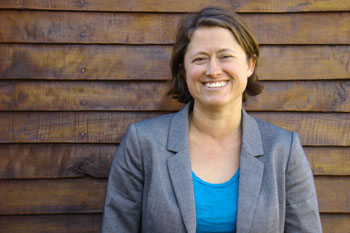 Dr Aliza le Roux |
Dr Aliza le Roux, senior lecturer in the Department of Zoology and Entomology on the Qwaqwa Campus of the University of the Free State (UFS), was selected as a member of the 2014 South African Young Academy of Science (SAYAS). Dr Le Roux, a member of the Vice-Chancellor's Prestige Scholars Programme at the UFS, is also a South African National Research Foundation-rated (NRF) scientist (Y2) and the winner of the UFS Vice-Chancellor’s Excellence in Teaching Award in 2013.
She sees her selection to SAYAS as a unique opportunity to help change the face of science in South Africa. Dr Le Roux hopes to use her skills as project leader in social media, as well as her own learning experiences on a rural campus, to inspire especially ecological research in a country so rich in its own natural heritage.
The SAYAS selection committee was impressed by the high level of academic merit and depth of the nominations they received. “Your membership is critical in contributing to many of the vital activities and functioning of SAYAS, and we look forward to your active contributions to the further development and growth of the Young Academy,” said Prof Aldo Stroebel, Chair: SAYAS Selection Committee.
Prof Corli Witthuhn, Vice-Rector: Research at the UFS, said, “Aliza le Roux is an outstanding young scientist on our Qwaqwa Campus. She is not only an outstanding researcher but has also received prizes during the past year for her dedication to teaching. I am very excited about the young researchers on our Qwaqwa Campus with Aliza as one of the leaders, and I am looking forward to what else they can achieve in the next five years.”
In the past decade, Dr Le Roux focused her research on the cognitive and communicative skills of wild mammals in South Africa and Ethiopia. She spent four years as a postdoctoral research fellow at the University of Michigan, leading to ground-breaking research on the cognitive and communicative underpinnings of gelada monkey behaviour. Her current work encompasses an NRF-funded project on paternal care in bat-eared foxes, and experimental research on spatial cognition in wild samango monkeys. She is also involved in discussions with the Endangered Wildlife Trust to research the mitigation of road-kill incidents in South Africa.
Dr Le Roux hopes to combine cognitive ecology with more applied conservation questions in order to raise the profile of behavioural ecology as a discipline. She believes strongly in involving the public with scientific research, and has blogged for Nature Magazine on her adventures as field biologist. Her work has since found its way into numerous websites, magazine and newspaper articles and she has been interviewed on radio and BBC World.
Dr Le Roux will be inaugurated as SAYAS member on 14 October 2014.
Dr Marieka Gryzenhout from the Department of Plant Sciences is also a member of SAYAS.